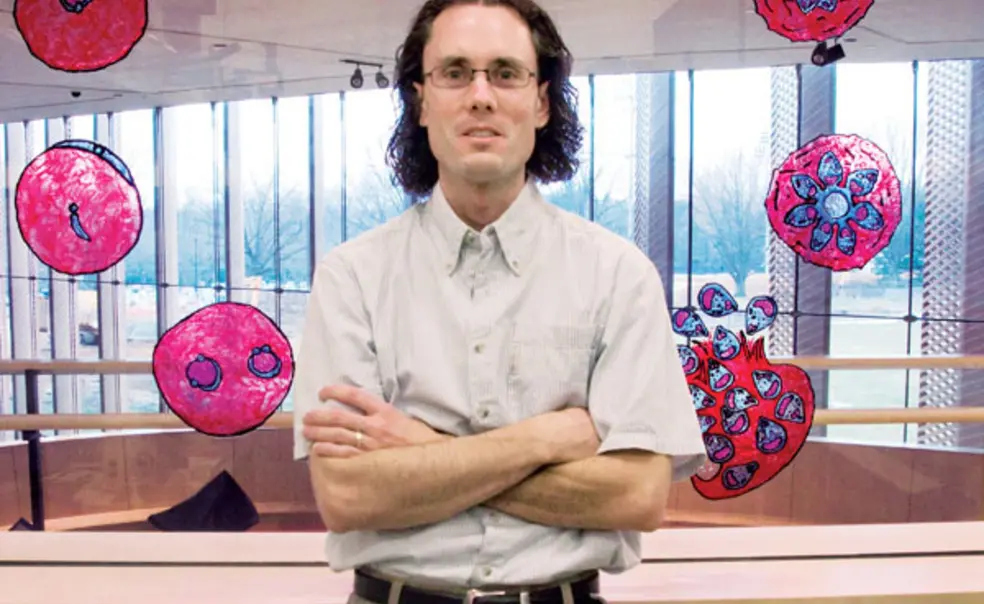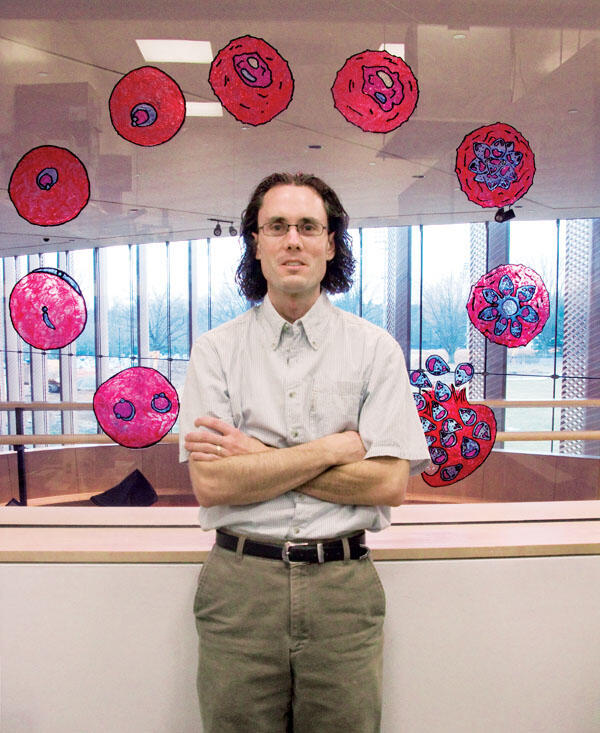Scientists have been working on a cure for malaria for more than 100 years, but the disease continues to vex those who live in the world’s tropical regions. It affects at least a half-billion people each year, according to the World Health Organization, and more than 1 million die — mostly children. Plasmodium, the single-celled parasite that causes malaria, has become resistant to many of the drugs currently used to treat it.
But not all the news is grim for malaria researchers, says Manuel Llinás, an assistant professor of molecular biology and the Lewis-Sigler Institute for Integrative Genomics. The genome sequence for Plasmodium, completed in 2002, revealed that about 2,500 genes — nearly half of its entire genome — never had been seen in another organism. Those unique genes could provide attractive targets for new drugs, since attacking them would be unlikely to affect human genes.
Plasmodia are able to survive in multiple types of cells — “not a trivial task” for single-celled organisms, Llinás says. An infection begins when a mosquito bites a human host and passes parasites into the bloodstream. The parasite travels to the liver, where it infects a single liver cell and produces thousands of new parasites that then infect red blood cells. The disease then follows a 48-hour cycle in which the parasites multiply and invade more red blood cells.
Llinás aims to find ways to disrupt that cycle and prevent the parasite from spreading. Much of his lab’s work focuses on understanding specific proteins called transcription factors, which help to regulate the parasite’s life cycle. Llinás has found that Plasmodium regulators are parasite-specific, encoded in the parasite’s DNA. “It’s opening up a whole new field in malaria research,” he explains, “because we’ve never actually understood how you control the way the genes are being used by the parasite.”
In another project with Josh Rabinowitz, an assistant professor of chemistry and colleague at the Lewis-Sigler Institute, Llinás is taking a closer look at how malaria parasites consume metabolites, the amino acids, sugars, and other small molecules the human body needs. The hope is to identify unique chemical products made by the parasite, figure out how those chemical products are made, and then work on ways to inhibit the production process.
Both projects delve into areas that malaria researchers do not know much about, and Llinás believes those are the avenues where the modern tools of genomics and metabolomics can make a significant impact. The National Institutes of Health gave a nod of agreement last year, recognizing Llinás as one of 29 recipients of the NIH New Innovators Award and providing $1.5 million in research funding over a five-year period.
By B.T.













No responses yet